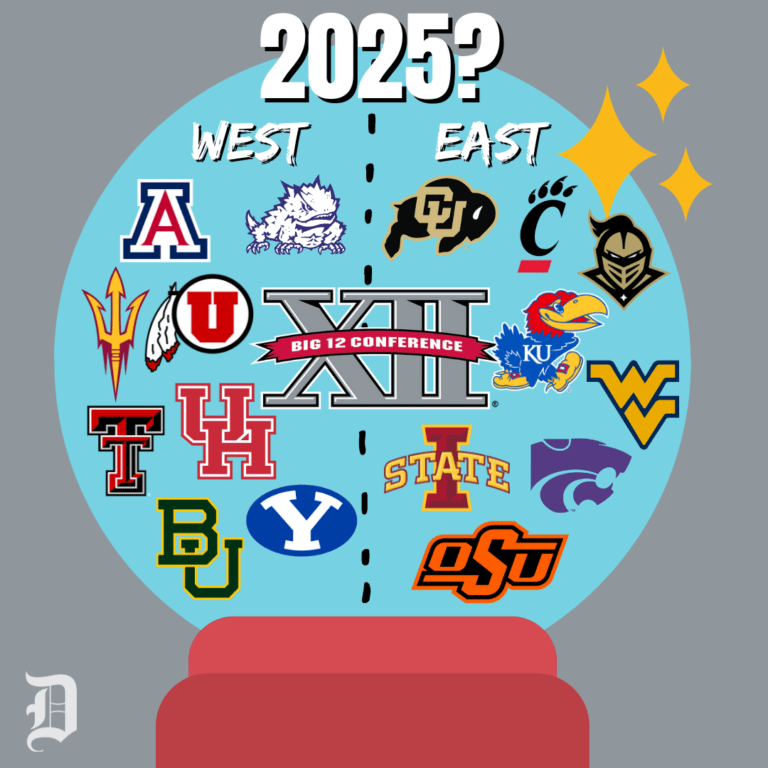As we fast forward to the year 2025, the landscape of college athletics is poised for significant changes, especially within the prestigious Big 12 Conference. The Big 12 Conference 2025 is set to usher in a new era of competition, innovation, and excitement that will undoubtedly captivate sports fans across the nation. With evolving trends in technology, shifting player dynamics, and the ever-present demand for excellence, the future of collegiate sports within the Big 12 Conference is teeming with possibilities. Join us as we delve into what’s in store for the Big 12 Conference in 2025 and how these developments will shape the future of college athletics as we know it.
Introduction to Big 12 Conference 2025
The Big 12 Conference 2025 is poised to bring about significant changes in the landscape of college athletics. With the evolving demands of sports enthusiasts and the ever-changing dynamics of collegiate sports, the Big 12 Conference is gearing up for an exciting and transformative year ahead.
Enhanced Fan Engagement
One of the key focuses for the Big 12 Conference 2025 is to enhance fan engagement through innovative technologies and interactive experiences during games. With the rise of digital platforms, fans can expect a more immersive and personalized viewing experience.
Expansion of Athletic Programs
The Big 12 Conference 2025 plans to expand its athletic programs to attract top-tier talent and increase competitiveness among member institutions. This strategic move aligns with the conference’s commitment to fostering a culture of excellence and sportsmanship.
- Introducing new sports disciplines
- Increasing scholarship opportunities
- Investing in state-of-the-art training facilities

History and Evolution of the Big 12 Conference
The Big 12 Conference, established in 1996, has a rich history and has played a significant role in college athletics. Over the years, it has evolved to become one of the major conferences in NCAA Division I sports, comprising 10 member institutions.
Formation and Early Years
The Big 12 Conference was formed through a merger of the Big Eight Conference and four Texas-based schools. This union aimed to create a more competitive and financially stable conference for its member institutions.
The conference initially consisted of 12 teams, leading to its name, but currently stands at 10 after the departure and addition of various schools over the years.
Key Milestones
Throughout its history, the Big 12 Conference has witnessed many pivotal moments, including national championships in football and basketball, as well as notable rivalries that have captured the attention of fans across the country.
- 1998: Texas A&M became the first conference team to win the NCAA Division I football championship.
- 2008: Kansas claimed the NCAA men’s basketball championship, highlighting the conference’s prowess in basketball.
Anticipated Changes and Developments
The Big 12 Conference is set to undergo significant transformations and developments by the year 2025. With the evolving landscape of college athletics, several key changes are anticipated that will shape the future of the conference.
New Teams and Realignment
One of the most anticipated changes is the addition of new teams to the Big 12 Conference. Realignment processes may lead to the entrance of prominent universities, enhancing the competitiveness and appeal of the conference.
Additionally, existing member institutions may undergo shifts in their affiliations with other conferences, contributing to a dynamic and fluid environment within college athletics.Exciting times lie ahead for fans and stakeholders.
Innovative Technologies and Fan Engagement
As the sports industry continues to embrace digital innovation, the Big 12 Conference is expected to implement cutting-edge technologies to enhance fan engagement and overall viewer experience.
- Virtual reality experiences
- Enhanced mobile applications
- Interactive content platforms
Impact on College Athletics Industry
The projected changes in the Big 12 Conference 2025 are poised to deeply impact the college athletics industry. As one of the major conferences in collegiate sports, what unfolds within the Big 12 has the potential to influence the direction of athletics at large.
Enhanced Competition
The expansion and reshuffling of teams within the Big 12 Conference are likely to lead to heightened levels of competition among member institutions. This increased competitiveness can ultimately raise the overall quality of games and attract a larger audience.
Technological Innovations
In line with the futuristic theme of 2025, advancements in technology are expected to play a significant role in transforming the college athletics landscape. From fan engagement through virtual reality experiences to data analytics driving player performance, technology is set to revolutionize how the industry operates.
Key Players and Teams to Watch in 2025
As we look forward to the future of the Big 12 Conference in 2025, there are several key players and teams that are poised to make a significant impact on college athletics. From rising stars to seasoned veterans, the competition promises to be fierce and exciting.
Potential Key Players
Keep an eye on standout athletes such as Emma Johnson from Texas A&M, known for her exceptional speed and agility on the field. Another player to watch is Nathan Lee from Oklahoma State, a dynamic quarterback with a powerful arm.
Top Teams to Watch
Among the top teams to watch in 2025 are the University of Texas Longhorns, who have been consistently strong contenders in the conference. The Oklahoma Sooners are also a force to be reckoned with, boasting a talented roster and a history of success.
- University of Texas Longhorns
- Oklahoma Sooners
- TCU Horned Frogs
- Baylor Bears
Technological Advancements and Innovations
In the year 2025, the Big 12 Conference is expected to witness a significant impact of technological advancements and innovations in the realm of college athletics. With the rapid evolution of technology, various aspects of sports and management are poised for transformation.
Virtual Reality Training
One of the key innovations anticipated is the widespread adoption of virtual reality training tools across Big 12 teams. Coaches and players can utilize VR simulations to enhance player performance and tactical strategies.
Smart Stadiums
Smart stadiums equipped with cutting-edge technology are likely to become prevalent in the conference by 2025. These venues will offer enhanced fan experiences, from interactive seat upgrades to immersive game statistics in real-time.
Challenges and Opportunities Ahead
As we look forward to the future of college athletics in 2025, the Big 12 Conference faces a myriad of challenges and opportunities. Big 12 Conference 2025 The landscape of sports is ever-evolving, and it is crucial for organizations to adapt to stay relevant.
Financial Sustainability
One of the key challenges for the Big 12 Conference in 2025 is ensuring financial sustainability. With the rising costs of running college sports programs, this conference must find innovative ways to generate revenue and manage expenses effectively.
Technological Integration
The opportunities that technology brings to the table are immense. Embracing data analytics, virtual reality experiences for fans, and enhancing training methods through advanced technologies can give the Big 12 Conference a competitive edge in 2025.
- Big data analytics for performance improvement
- Virtual reality fan engagement experiences
- Advanced training technologies for athletes
Frequently Asked Questions
- What is the Big 12 Conference?
- The Big 12 Conference is a collegiate athletic conference that consists of ten full-member universities.
- What makes the Big 12 Conference significant in college athletics?
- The Big 12 Conference is known for its competitive athletic programs in various sports, particularly in football and basketball.
- What changes are expected in the Big 12 Conference by 2025?
- By 2025, the Big 12 Conference may see shifts in member universities, changes in conference structure, or updates in athletic programs and facilities.
- How could the future of the Big 12 Conference impact college athletics as a whole?
- The developments in the Big 12 Conference can influence the landscape of college athletics, affecting recruiting, TV rights, revenue, and overall competitiveness.
- What are some potential challenges or opportunities the Big 12 Conference might face in the future?
- Challenges could include realignment issues or revenue concerns, while opportunities may arise from innovation in streaming services or partnerships with major brands.
Future Prospects for the Big 12 Conference in 2025 and Beyond
As we look ahead to the landscape of college athletics in 2025, the Big 12 Conference stands poised on the edge of new opportunities and challenges. With a renewed focus on innovation, inclusivity, and student-athlete well-being, the conference is set to redefine the standards of excellence in collegiate sports. The expansion of media platforms, advancements in technology, and shifting demographics will shape the way fans engage with their favorite teams and players.
By fostering a culture of collaboration and adaptability, the Big 12 Conference is primed to thrive in an ever-evolving sports industry. With a commitment to academic integrity and athletic prowess, the future looks bright for the Big 12 Conference as it continues to set the benchmark for excellence in college athletics.


